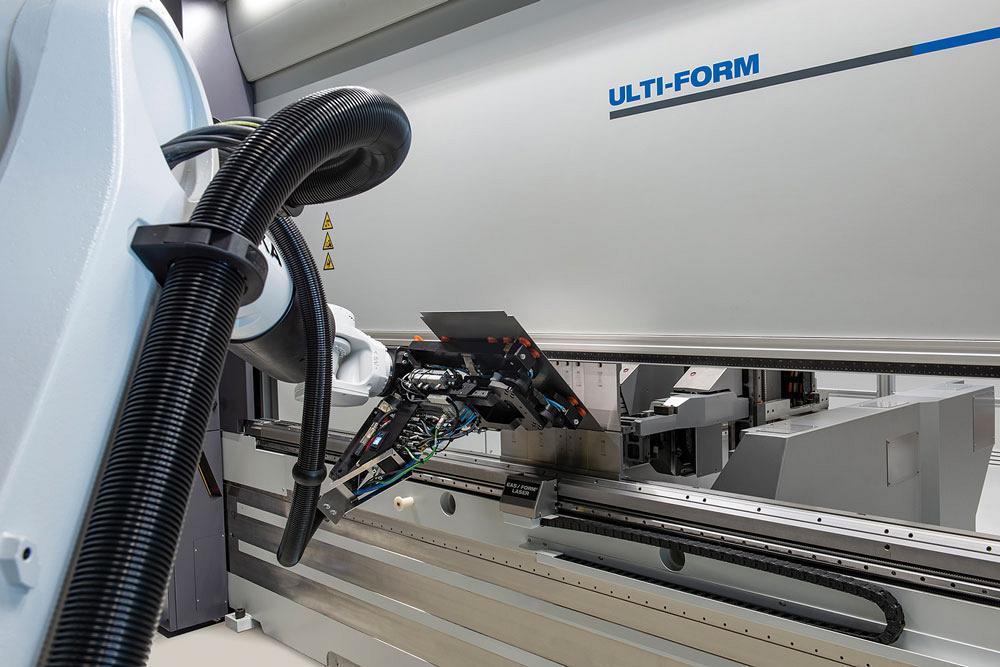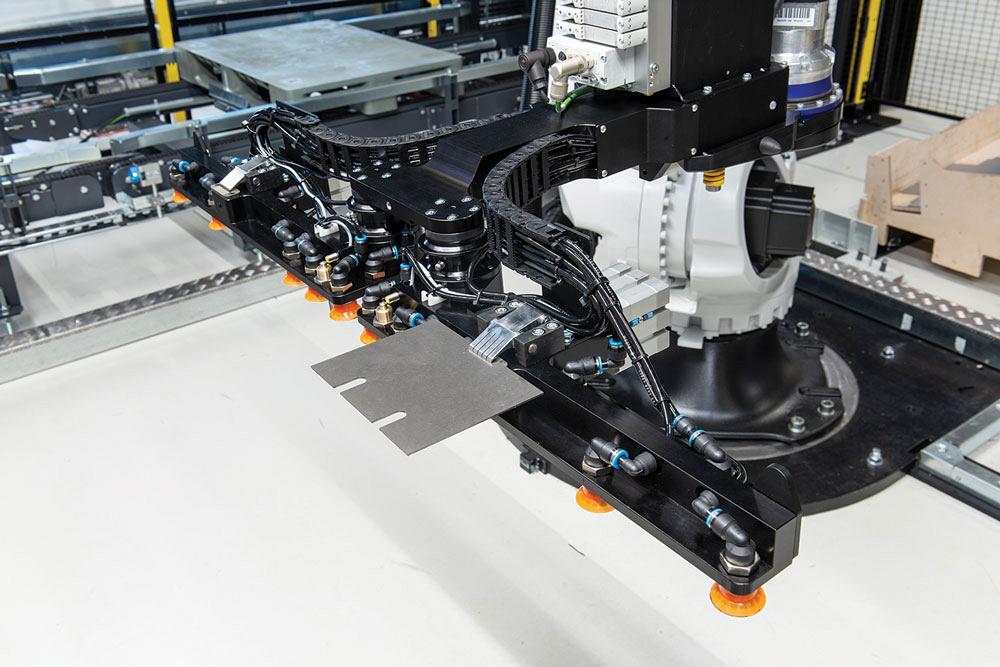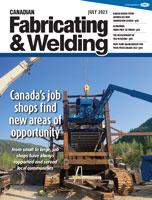Sales and Marketing Director
- FMA
- The Fabricator
- FABTECH
- Canadian Metalworking
Part flow management for your press brake cell
Prepping your part from design to completion helps strategically manage automated bending
- By John Wolf
- July 28, 2023
- Article
- Fabricating
The speed with which fibre lasers can produce parts has required shops to rethink their approach to press brake operations. The popularity of brakes equipped with tool change capabilities and cells using robots and even cobots have risen substantially as the need for speed and the challenge of finding operators has grown.
The methods for ensuring that a press brake department runs as efficiently as possible don’t necessarily change substantially with the addition of automation, but it does introduce an added layer of flexibility.
Efficient press brake use demands that part flow management begin at the design stage.
Software Compatibility
Today’s advanced software allows shops to break an assembly into its separate parts, unfold them, and determine what processes are necessary to get them from initial drawing to finished part in a very short time.
The key benefit that is becoming more common is having software that sends the bend programs created by this software out to a robotic simulator that configures the robotic path and then writes the entire program and sends it to the machine. Having compatible software between these two processes is key to ensuring efficiencies.
Software compatibility will ensure that bend sequencing works effectively with both the press brake setup and the robot’s capabilities in terms of movement.
Flow Choices
The choice of how to deploy robotics on a press brake is really up to each shop, and everyone has an approach that works best for them. Some shops choose to run a variety of high-volume parts with the robot at night, while an operator manually bends small-run or short-lead-time parts with the same machine during the day.
Others will kit parts, running small numbers of individual parts in a series so that each set is ready for assembly as a group.
Another option is to have parts coming directly from a laser or punch press in a confined cell so that all processes involved are confined behind a gate.
Each shop will choose the best flow based on the speed at which parts or full assemblies are required to reach paint or assembly in a manner that keeps material flow as steady as possible through a facility. Again, software will help guide this process most efficiently.

Most press brake cells are equipped with industrial-grade robotics. A shop doing simple bracket-type bend programs on thin materials might find that a cobot suits its needs.
For instance, the system might group parts that are going straight to paint from bending, and group other parts together that will go on to be welded. Those going to welding might be prioritized in part flow through the press brake cell.
In the cell itself, if a complex assembly has 15 features that are being bent, the software would help determine how many features can be bent using the same setup to save tool change times. It can then optimize production time by running those bends first and then following up with special tooling applications. Quite often, common tooling can run about 65 per cent of parts in a shop. Using an automatic tool change system can already reduce a shop’s bending time by 80 per cent. Further time savings are achieved with common tooling choices.
Automation Support Choices
Determining how precise your bending sequences need to be will also determine some of the peripheral equipment choices made in and around a press brake cell.
For instance, most press brake cells are equipped with industrial-grade robotics. Shops doing simple bracket-type bend programs on thin materials might find that a cobot suits its needs.
Similarly, the complexity of the shapes being bent might determine whether or not a 6-axis gauge is necessary in the press brake cell setup. Those shops that aim to run their cell to produce bracket-type bends on long runs of parts at night and then bend more complex parts manually during the day may not need the precision that comes with a more sophisticated backgauge. But those planning to run all parts through the cell can benefit from the precision that technology adds.
Choosing the right press brake automation setup can be challenging. Finding the right system requires a shop to think through its mix now and consider the development of that part mix in the future. The ideal approach is to provide a potential supplier with a decent sample set of parts to help determine the ideal tonnage for the machine and the preferred setup for tooling and robotics needs.
Software standardization, meanwhile, will help in the long run to keep that cell running as efficiently as possible. If the brake and the robot can communicate effectively, shops will experience speed and efficiency benefits in both programming and part completion.
John Wolf is sales and marketing director for LVD North America, www.lvdgroup.com.
About the Author
subscribe now


Keep up to date with the latest news, events, and technology for all things metal from our pair of monthly magazines written specifically for Canadian manufacturers!
Start Your Free Subscription- Industry Events
Automate 2024
- May 6 - 9, 2024
- Chicago, IL
ANCA Open House
- May 7 - 8, 2024
- Wixom, MI
17th annual Joint Open House
- May 8 - 9, 2024
- Oakville and Mississauga, ON Canada
MME Saskatoon
- May 28, 2024
- Saskatoon, SK Canada
CME's Health & Safety Symposium for Manufacturers
- May 29, 2024
- Mississauga, ON Canada






















